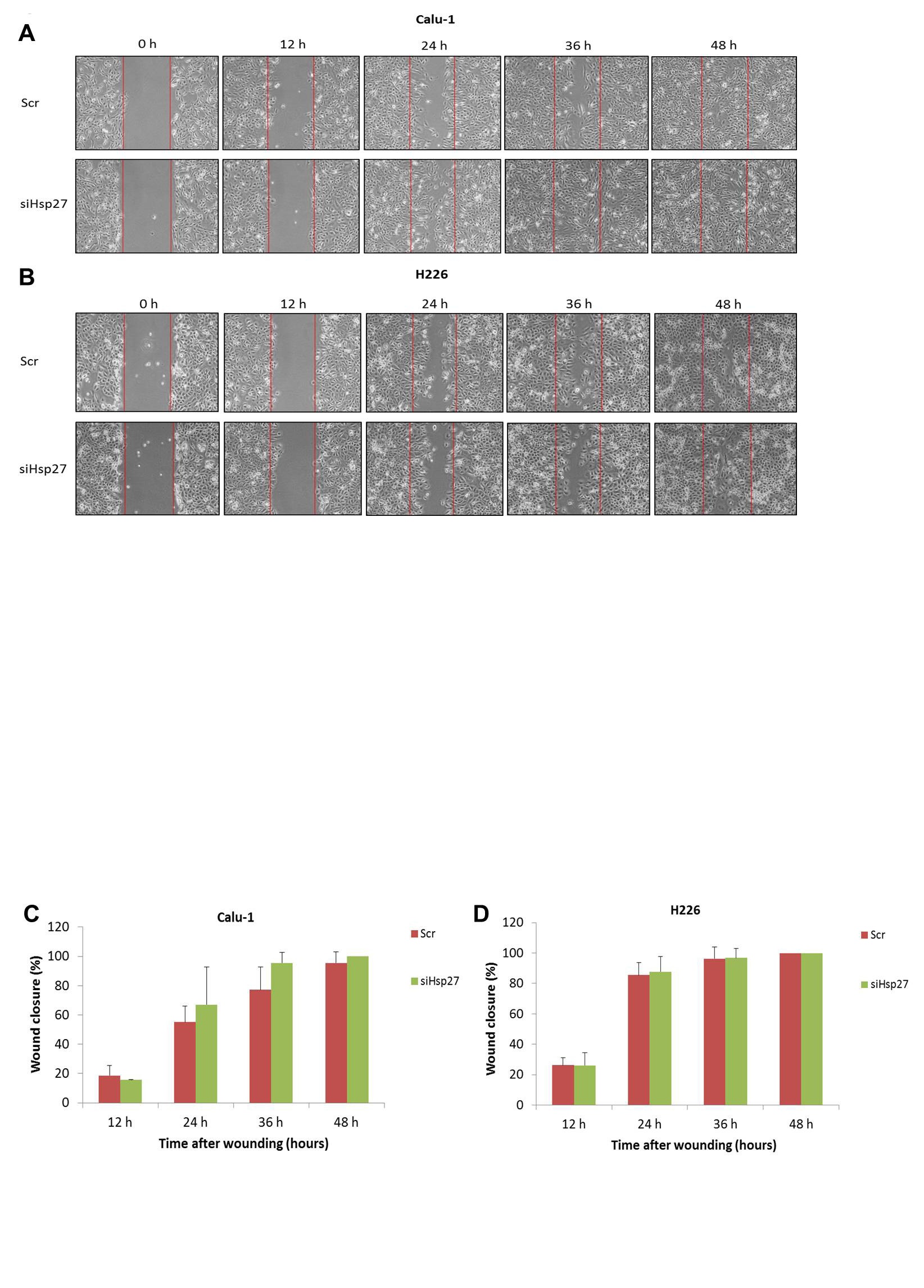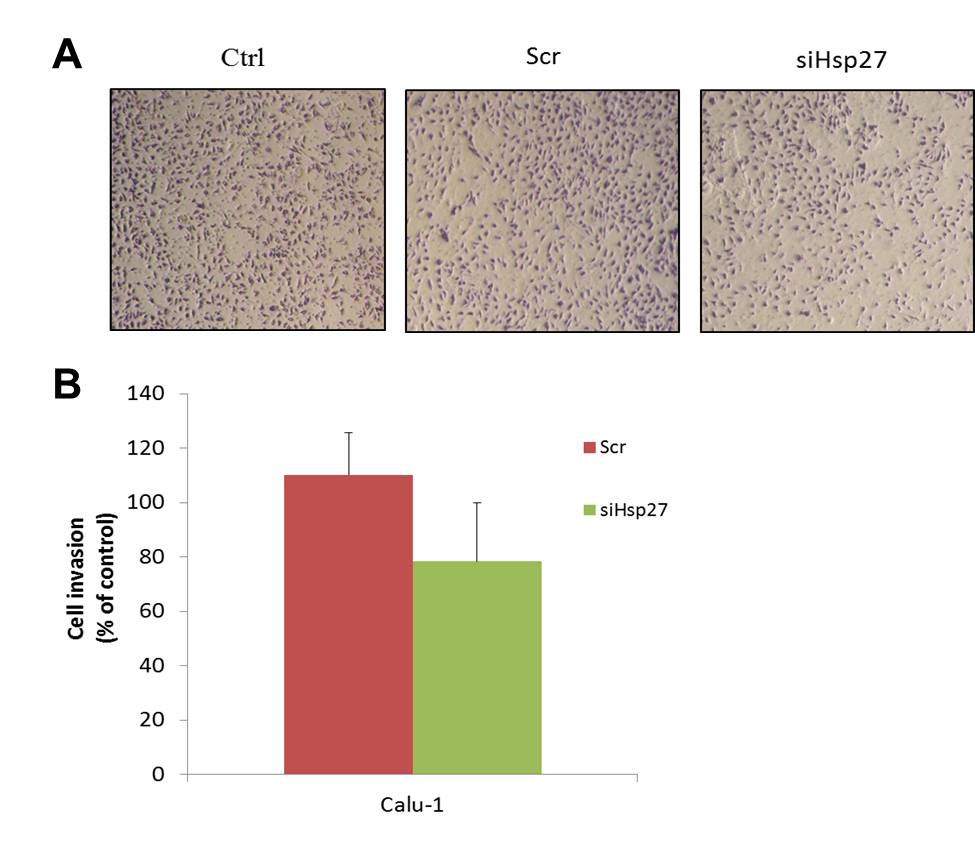
Figure 1 Western blot analysis of Hsp27 in nine non-small cell lung squamous cell carcinoma cell lines. (A) Basal expression levels of Hsp27 from the nine SCC cell lines were detected. Whole cell lysates (15 µg) were resolved on SDS-PAGE gel and probed with goat anti-Hsp27 polyclonal primary antibody for western blot analysis. ß-actin was used as loading control. (B) Quantitative analysis of Hsp27 expression was performed by normalizing Hsp27 protein expression against ß-actin.





